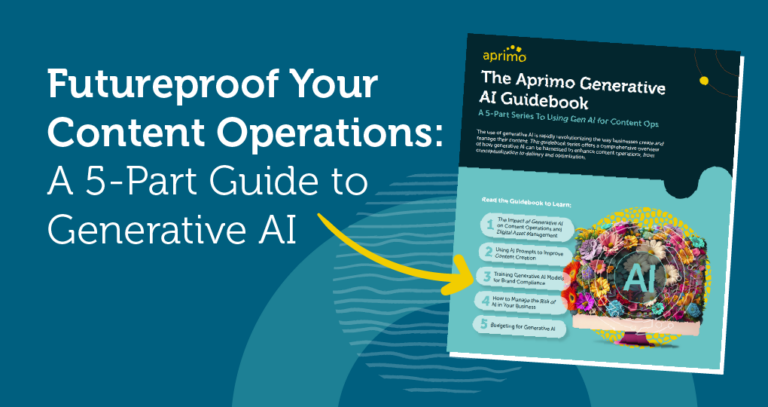Content Operations for Financial Education: Best Practices

An Intelliflo survey found that 59% of Americans want to get financial advice, but they’re not sure where they can get it. Part of the reason for this is a lack of financial education. Only 52% of adults in the world are financially literate, and most of them are living in northern Europe. That means there is a significant need for financial education. Companies providing financial services, such as banks and investment firms, have an opportunity to fill this gap. One route to maximize customer satisfaction is to improve internal content operations through a digital asset management (DAM) platform. Let’s learn about content ops and their importance in financial education.

Significance of Content Ops in Financial Education
Before we get into details, let’s answer the following: What is content ops? Content operations, or content ops, is the process of creating, managing, organizing, and distributing digital content. In financial education, it can include:
-
Financial advice
-
Guides and articles
-
Webinars
-
Infographics
-
Calculators and tools
-
Videos
-
Podcasts
Content ops is an integral part of financial education because it helps:
-
Structure the learning experience through a well-defined content strategy
-
Keep the educational message consistent in tone, style, and quality across educational materials and platforms
-
Allow multichannel distribution of the content (e.g., mobile apps, email, social media, and websites)
-
Update and maintain content easily
In short, content ops helps financial education providers create a seamless customer experience.
Creating a Content Strategy Tailored for Financial Education
If you want to develop a winning content strategy for financial education, determine your target audience first. It will help you tailor your content to specific individuals’ needs and make it more appealing and engaging.
Suppose you determine your target audience is college students. Now, you can define your objectives based on this group. For example, you can tailor your content around the following goals:
-
Improving financial literacy among college students
-
Promoting responsible spending and saving habits
-
Encouraging the use of digital tools (possibly the one you sell) for managing personal finances
Once you determine your audience and objectives, you can move on to creating a content plan. Think about the content topics. For college students, these can be:
-
Credit management
-
Retirement planning
-
Credit cards for students
-
Financial management for overseas students
-
Investing basics
-
Budgeting tips
Next, choose content formats. Do you plan to create articles or videos? Maybe a mix of podcasts, interactive tools, webinars, videos, infographics, and articles. Some interactive elements include:
-
Quizzes
-
Games
-
Simulations
-
Calculators
Also, decide how you will distribute this content. Possible distribution channels include influencer partnerships, social media, newsletters, and webinars. But again, this will depend on your target group. Do your research and determine what resonates with your specific audience.


Optimizing Content Production Workflow for Financial Topics
Once you create your content strategy, it’s time to streamline the production process. One way to do this is by implementing a content management system (CMS). A CMS can help you:
-
Organize and store content in a central location
-
Easily collaborate with team members on the creation and editing of content
-
Automate tasks, such as publishing to multiple platforms or scheduling posts
Further, if you integrate your CMS with a digital asset management system you can enjoy:
-
Access control for authorized users
-
Centralized and secure storage for all your digital assets
-
Unlimited scale for performance, storage, assets, and users
-
Rest API to use the platform’s open architecture
-
Integration with third-party tools
-
Support for 4k video, text, digital content, and more
Implementing Content Governance for Accuracy and Compliance
Since financial education has to be absolutely accurate, it’s essential to have a governance system for your content operations. Here are some helpful steps for the governance of your content:
-
Have a dedicated team for content review and approval
-
Establish clear guidelines on language, tone, and terminology
-
Follow compliance regulations for financial content (e.g., SEC, FTC)
-
Regularly audit content for accuracy
-
Update content
-
Archive outdated or misleading content
In the Information Systems Management study, the author proposed content governance for financial institutions based on DAMA methodology and BCBS 239. The DAMA methodology is a framework for managing data assets, while BCBS 239 is a set of risk data aggregation and reporting principles. These systems ensure proper metadata management and data quality.


Content Distribution in Financial Education
Technology can be very helpful when putting your content out there. As mentioned, a CMS system can aid you in publishing and distributing content across various platforms quickly and securely. Some new publishing tools also leverage artificial intelligence (AI) to automate mundane tasks and boost content operations as a whole.
When it comes to the common content distribution channels for financial education, you can turn to:
-
Social media platforms (e.g. Twitter, LinkedIn)
-
Email marketing
-
Webinars or online events
-
Partnering with other financial institutions or organizations
-
Paid advertisements (e.g., Google Ads)
-
Influencer partnerships
For the digital routes, don’t sleep on the importance of SEO. Invest in an SEO special or an agency that can help you with keyword research and optimization. Some helpful strategies include:
-
Creating high-quality, relevant content
-
Using long-tail keywords
-
Optimizing meta descriptions and titles
-
Building backlinks to your content
-
Conducting SEO audits and making necessary adjustments
-
Deleting ”zombie” (outdated or low-performing) pages
-
Using social media for link-building and branding
Measuring Content Performance
You created and published content for financial education. Good job. Now, it’s time to measure how well it’s doing.
These Key Performance Indicators (KPIs) help measure content performance in financial education:
-
Website traffic and engagement metrics (e.g., unique visitors and time on page)
-
Social media analytics (e.g., followers, reach, and engagement)
-
Email marketing metrics (e.g., open rate and click-through rate)
-
Webinar attendance and feedback
-
Number of backlinks to your content
Some tools you can use to track and analyze these metrics are Google Analytics, Ahrefs, Moz, Semrush, and Hootsuite. The analytics you gauge from these platforms can help you determine the success of your content and identify where to make changes.
Suppose your videos are not performing well. Maybe they’re too long or don’t have any subtitles. For your future content strategy, you can consider making shorter videos with subtitles to improve accessibility. Then, check again after a few months to see if these changes have positively impacted your KPIs.

Frequently Asked Questions
How do content operations differ in the financial education sector compared to other industries?
DAM systems provide strong encryption protocols, strict access controls, and comprehensive audit trails. They prevent unauthorized access to sensitive documents, track document modifications for compliance, and maintain data integrity to head off risks in the highly regulated banking industry.
What role does SEO play in content operations for financial education, and how can it be optimized?
Yes, DAM systems are designed to work with the systems you already use. They’re compatible with various platforms through API integration, allowing efficient data sharing and synchronization. This integration streamlines workflows, improves data consistency, and provides cohesive operation between DAM and core banking systems, CRM, and other financial software.
How can financial institutions balance the need for compliance with the demand for engaging content?
DAM features like automated retention policies, secure audit trails, document control, versioning, and secure data handling help banks meet stringent legal and regulatory requirements in finance. Good DAM solutions are also regularly updated to comply with changing data protection regulations and newly discovered security vulnerabilities.
What emerging trends should financial educators be aware of in the realm of content operations?
Some emerging trends to keep an eye on include:
- Mobile and voice search,
- Personalized and interactive content,
- Mobile-first content delivery,
- ESG considerations,
- Social media integration, and
- Data analytics.




